Pillars of Eternity 2: Deadfire sets sail for frontiers beyond mere tradition
Feargus Urquhart and Josh Sawyer discuss direction and expectation in Obsidian's RPG follow-up.
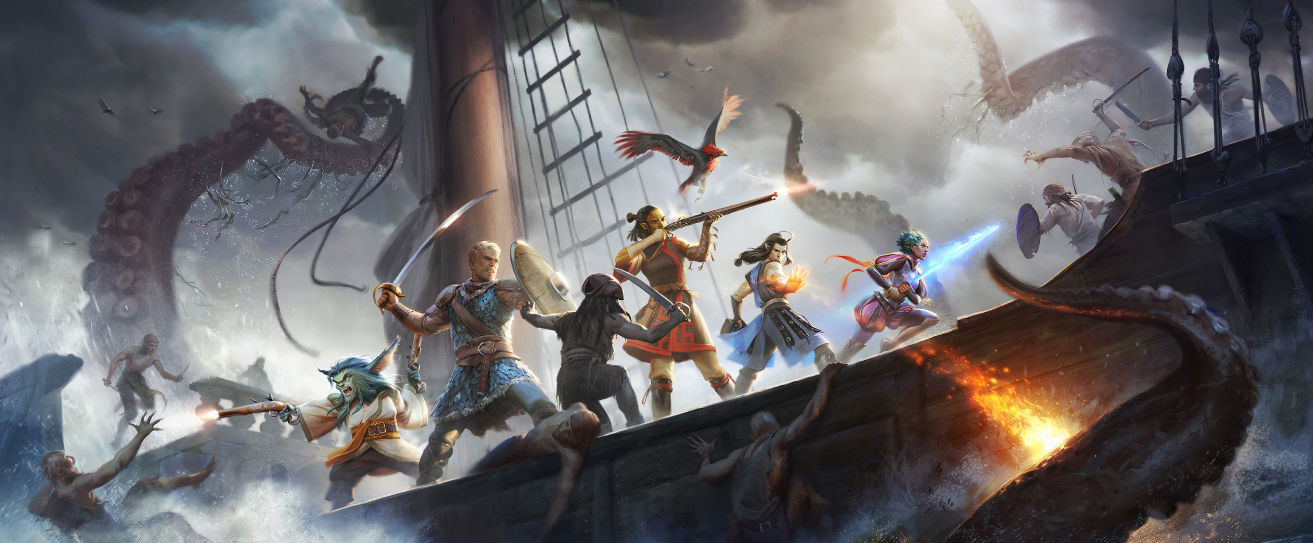
This article was originally published in PC Gamer issue 302. For more quality articles about all things PC gaming, you can subscribe now in the UK and the US.
Pillars of Eternity represents two truths: that classic roleplaying games aren’t dead, and that Obsidian Entertainment, a studio long defined by making games for other companies, is better off building its own. Following the cancellation of a project that left Obsidian in dire straits, Pillars of Eternity’s gamble hinged on a single idea: could what was old become new again?
One Kickstarter campaign and nearly $4 million dollars of crowdfunding later, Obsidian had its answer. Amid the Skyrims and Witcher 3s of the world, players hungered for a return to the classic roleplaying games of yesteryear. Because Obsidian is known for its stellar writing, I have to believe Pillars of Eternity 2: Deadfire’s nautical themes are at least partially metaphorical. The first game saved Obsidian from drowning, and Pillars of Eternity 2 is ready to sail to a new world.
"I always thought it would be awesome to have our own world to tell stories in,” Obsidian Entertainment CEO Feargus Urquhart tells me. “Now we can finally do that."
Like the Dungeons & Dragons mythos that inspires it, the world of Pillars’ Eora is bigger than any one story told within it. For Urquhart and director Josh Sawyer, there was never any question of whether or not there would be a sequel. “This is our chance to grow something that we planted,” Sawyer tells me. “We started off doing something that was an homage. There’s a lot of stuff that we pulled over very intentionally from that bygone era, but now we want to grow this—not to betray the roots of it, but to say that this is our world and that we want to move it forward.”
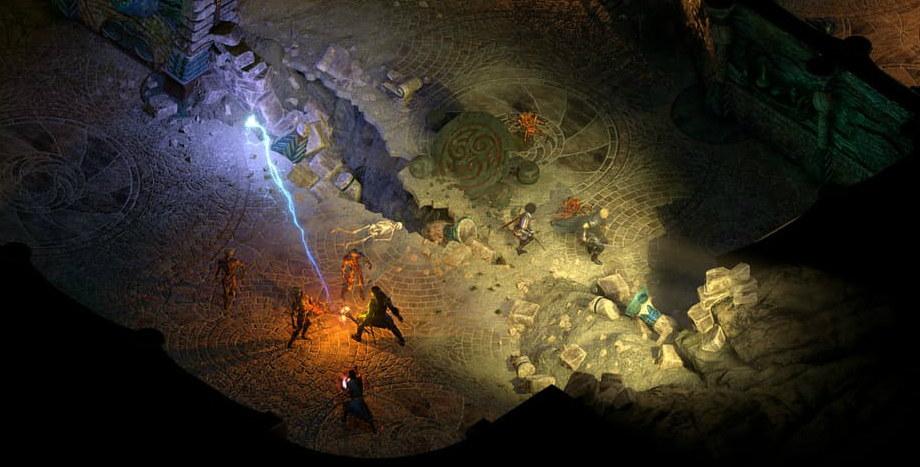
And Pillars of Eternity 2 is certainly moving forward. Years after the events of the first game, the Watcher, the protagonist with a supernatural ability to gaze into the Between and read the past lives of people’s souls you played in the first game, sits in their castle at Caed Nua. Things seem comfortable and quiet, now that the curse that caused a generation of soulless babies to be slaughtered is finally broken and the cult behind it brought to justice.
Because you started the first game as a nameless vagrant and end it by personally treating with gods, I was curious how Obsidian could ever hope to expand the scope of Pillars of Eternity’s storytelling. Sawyer tells me that “the stakes definitely get higher,” but it’s not until he begins to elaborate that I realise exactly what that means. Beneath the castle at Caed Nua rests an ancient 600-foot-high magic statue that players only glimpsed pieces of in the first game. I imagine we’ll get a much better look at it in Deadfire—what with it becoming the living vessel of the supposedly dead god Eothas.
The biggest gaming news, reviews and hardware deals
Keep up to date with the most important stories and the best deals, as picked by the PC Gamer team.
“He animates it, destroying your entire castle and killing almost everyone in it,” Sawyer says, somewhat gleefully. “You are left on the brink of death and discover that your fate is tied to that of Eothas. You need to pursue him and find out what he’s up to as he marches off into the sea toward the Deadfi re Archipelago.”
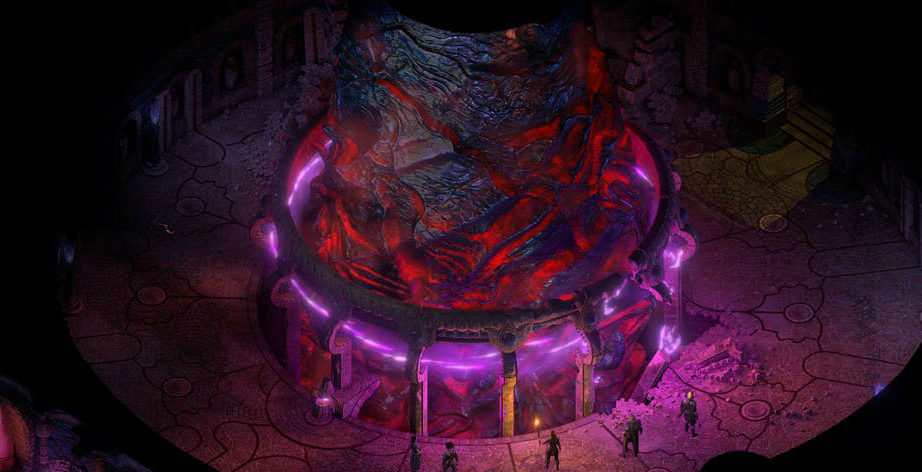
Quite literally following in Eothas’s footsteps, players sail to a treacherous thousand-mile long stretch of islands unlike anything seen in the Dyrwood. “People know of it as an untamed land filled with pirates, sea monsters, and storms,” Sawyer says. “When we made Pillars of Eternity, we were trying to make something that felt like [AD&D’s] Sword Coast or the Dalelands. Something that felt very traditional—Mediterranean or central European. But we wanted to go in a different direction for Pillars 2.”
For open-minded fans of the traditional RPG, abandoning the aesthetic influences that have dominated the genre since Gary Gygax first rolled a D20 is an exciting proposition. But players won’t be strangers in a strange land, either. “There’s still a colonial presence on the Deadfire.” Sawyer tells me. “You’ll see familiar elements the same way that if you go into South America you’ll see Spanish-style buildings.”
Architecture won’t be the only familiar thing about the Deadfire Archipelago, either. Players who completed the first game can import their saves, carrying over some of the bigger decisions they made. While Sawyer and Urquhart are keeping the details close to their chests, companions such as Edér will return—that is if you didn’t murder them during your stay in the Dyrwood. “If you did, you have to live with it,” Sawyer laughs. Of course, players can determine the events of the first game with a new save, so there’s plenty freedom to see how various choices might have consequences that reach across the sea.
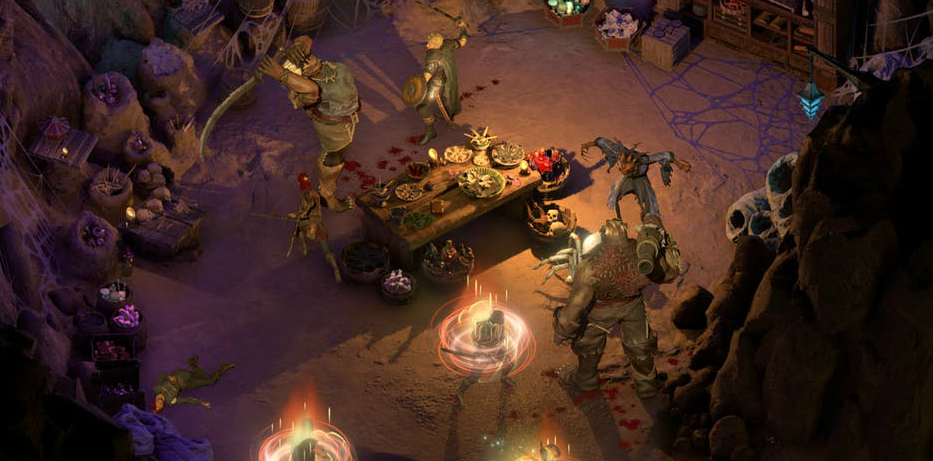
But there’s more spice to Pillars of Eternity 2 than a handful of exotic islands. If Pillars of Eternity drew inspiration from the bygone era of classic roleplaying games, the sequel is a look at where they might have gone had the genre not faded away.
Man overboard
“We don’t want to take Pillars of Eternity 2 in a direction that feels untrue to these games,” Sawyer tells me. Minutes later he undermines that with news that one of the biggest changes involves dropping the party size down to five characters instead of six. “We know people are going to be upset by that,” he says. “That’s OK, we believe it makes the game better.”
If you never grew up exploring the frigid wastes of Icewind Dale, one less party member to worry about might not seem like a big deal. However, traditions such as friendly fire and pausable combat, and six-member parties are, for many, sacred. “We had talked about it going all the way back to Pillars of Eternity,” Sawyer confesses almost shamefully. “But doing that to a spiritual successor of games that almost always had six party members didn’t seem like a good idea.”
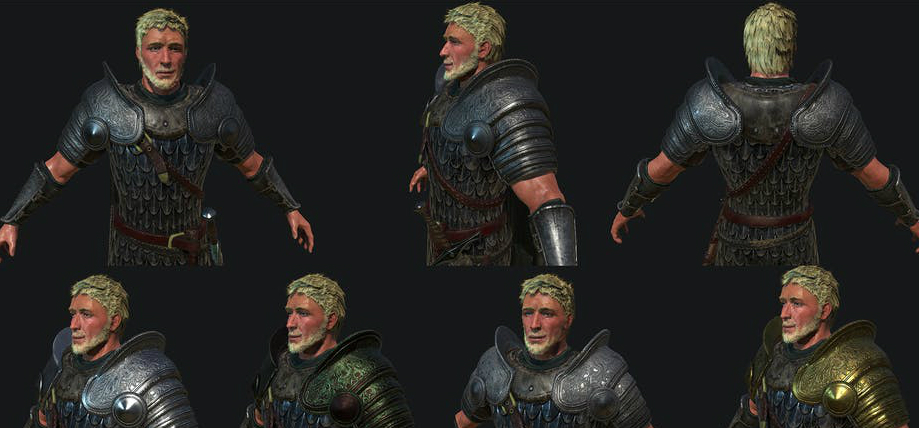
That’s the difference with Pillars of Eternity 2: while Obsidian still has reverence for the genre’s past, it’s not going to stick to tradition where it no longer makes sense. “It makes a significant difference in how easily you can process what’s going on on-screen. As the party size grows, the number of combatants also grows. So with five party members, it feels just a little bit easier to manage.”
While Pillars of Eternity’s combat possesses a lot of strengths, Sawyer and Urquhart are more than aware of its failings and one less party member isn’t going to stand in their way of addressing those issues. Along with a smaller party, the class system is completely overhauled, the speed slowed slightly, and the 30-odd afflictions reimagined into broader categories so that countering them is more intuitive and doesn’t require a spreadsheet to track them all.
Sawyer also says that the AI governing companions and enemies has been “much improved,” and that players can rely on their companions to make smarter decisions in combat without having to guide them at every stage. But the biggest changes are the least traditional of all—if only because they’ve only become possible with modern game technology.
“We want to add things that feel like, if we went back in time and we made Icewind Dale 3 or Baldur’s Gate 3, they’d feel like very cool additions to those franchises,” Sawyer says. He’s speaking not just on a thematic level, but also on a technical one. Two of the biggest features of Pillars of Eternity 2 are a fully dynamic weather system and a world of characters that don’t just stand in one place waiting to be spoken to.“
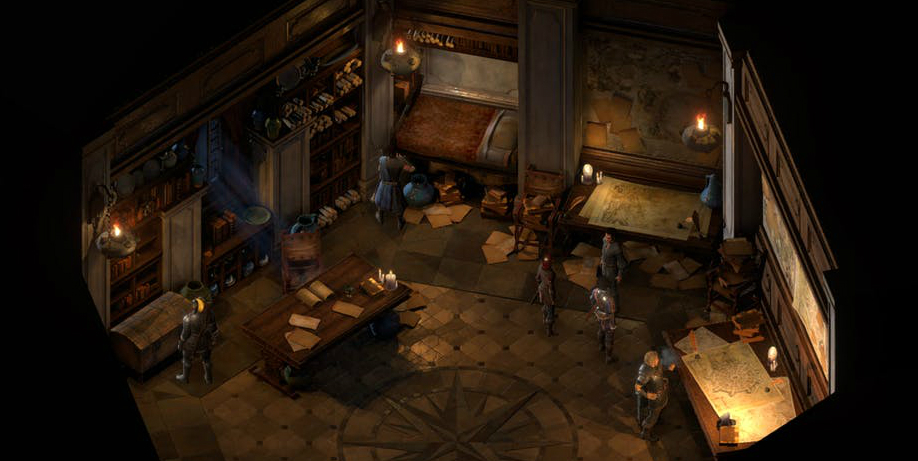
"The Deadfire Archipelago is this tempestuous wild land of violent storms, it seemed kind of weird to not have systems to maximise that influence," Sawyer says. Spurred on by feedback that Pillars of Eternity felt too static, its sequel promises to be bustling with a kind of life never seen in older RPGs. Vicious sea winds will bend trees, ruffle clothing, and tussle objects in the environment one minute while rains will soak the earth and anyone caught standing in it the next. The boundary between the 3D characters and 2D background will be blurred, keeping the aesthetic splendour of the latter while also not looking like a screenshot half of the time.
These ideas aren’t exactly all-new territory for RPGs. After all, The Elder Scrolls IV: Oblivion tried to pioneer advancements in character schedules over a decade ago. But Sawyer says it’s not good enough to just make the world feel lively, it’s got to feel interesting too. “It gives us opportunities to make quests resolve in different ways based on how and when you approach them,” he says. “It’s more than people going to work and coming home. Guards might switch to other routines at a certain time which gives you an opportunity to do something in a way that you couldn’t do normally.”
It’s these seemingly small changes that make Sawyer most excited. At one point, he spends several minutes talking about how characters now sheathe their weapons outside of combat. With the same level of enthusiasm he has for 600-foot-tall god statues, he then explains how even firing a gun will cause cloaks to billow in real time from the blast. Later, he and Urquhart get distracted enthusing over how the waves physically push boats and small objects in water. I begin to realise that, to Urquhart and Sawyer, Pillars of Eternity 2 is as much about the little things as it is the big. For a series the richness of which is found in the little pockets of written context between dialogue, that only seems appropriate.
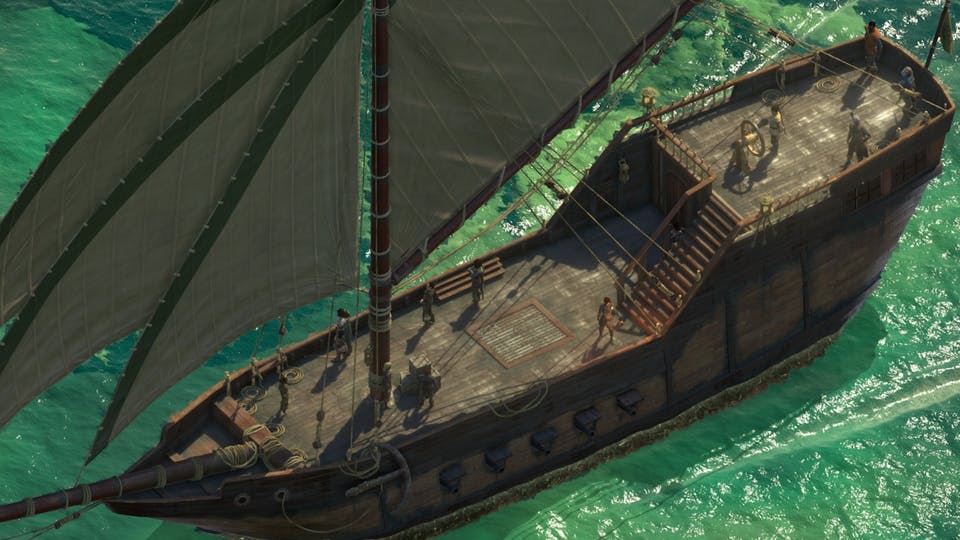
But even in all their excitement, both know that Pillars of Eternity 2 is also standing in the shadow of a giant—and I’m not talking about Eothas. “Managing expectations is one challenge,” Sawyer says. “I think a lot of people, whether conscious of it or not, will look at Pillars of Eternity as Baldur’s Gate and Pillars of Eternity 2 as Baldur’s Gate 2. So, living up to Baldur’s Gate 2? That’s pretty rough.” But the Deadfi re Archipelago won’t be the same massive sequel that Baldur’s Gate 2 was. While Sawyer was hesitant to give specifics, he did say that it’s “roughly the size” of the world of Pillars of Eternity.
If there’s one thing that might help with regard to expectations, it’s that player feedback will be a crucial part of developing the game. As with the first, Obsidian is planning to turn to crowd-funding through Fig, enabling backers to jump into early betas before Pillars of Eternity 2 releases for real in March, 2018. “Sometimes people can be really harsh,” Sawyer says, “but it’s better to hear it when it’s in a beta phase than when it comes out.”
“We never underestimate our own ability to screw up,” Urquhart chuckles. He goes on to explain that crowd-funding isn’t just a chance to get players in early and to cover the cost of the trip to the Deadfire Archipelago, but also to revisit a defining moment in Obsidian’s history. “When we did the Kickstarter for Pillars of Eternity, that was an amazing thing for us to make the game we wanted to and actually own it,” he says. “It’s like people voting for what they want to play. That validates what we’re doing and how we’re doing it. What’s been gratifying is that we love hardcore cRPGs and we’ve always wanted to be able to make them. To see that a whole bunch of people are willing to trust us to do that is amazing.”
With over 7 years of experience with in-depth feature reporting, Steven's mission is to chronicle the fascinating ways that games intersect our lives. Whether it's colossal in-game wars in an MMO, or long-haul truckers who turn to games to protect them from the loneliness of the open road, Steven tries to unearth PC gaming's greatest untold stories. His love of PC gaming started extremely early. Without money to spend, he spent an entire day watching the progress bar on a 25mb download of the Heroes of Might and Magic 2 demo that he then played for at least a hundred hours. It was a good demo.


